Biography
Several trips to Arizona between 1906 and 1917 permanently captured his interest in the archaeology and ethnology of the American southwest. Throughout the 1920s Fulton regularly traveled in the Arizona from his home in New England, exploring the mountains, as well as the canyons and mesa country seeking evidence of past occupation by earlier cultures that had inhabited the area.

Arizona is a state in the southwestern region of the United States. It is also part of the Western and the Mountain states. It is the sixth largest and the 14th most populous of the 50 states. Its capital and largest city is Phoenix. Arizona shares the Four Corners region with Utah, Colorado, and New Mexico; its other neighboring states are Nevada and California to the west and the Mexican states of Sonora and Baja California to the south and southwest.
On one of his visits he was introduced to Texas Canyon with its unique geology and tales of prehistoric settlements. Fulton purchased about 1,600 acres (6.5 km2) in Texas Canyon calling it the “FF Ranch” in 1930. He built a home in the canyon in 1931.

Texas Canyon is located in Cochise County, Arizona about 20 miles east of Benson on Interstate 10 and lies between the Little Dragoon Mountains on the north and the Dragoon Mountains to the south. Known for the giant granite boulders, the canyon frequently attracts rockhounds and photographers.
As early as 1929, Fulton began to excavate archaeological sites on the property in Arizona. Fulton was asked to become a director of the Museum of the American Indian, Heye Foundation in New York City in 1934, and it was under the auspices of this organization that he published his Archaeological Notes on Texas Canyon, Arizona. By 1936, Fulton’s collection of ethnographic and archaeological materials had become so large that a small three-room museum and workroom was built on the ranch property to house it.

The National Museum of the American Indian is part of the Smithsonian Institution and is committed to advancing knowledge and understanding of the Native cultures of the Western Hemisphere—past, present, and future—through partnership with Native people and others. The museum works to support the continuance of culture, traditional values, and transitions in contemporary Native life. It has three facilities: the National Museum of the American Indian on the National Mall in Washington, D.C., which opened on September 21, 2004, on Fourth Street and Independence Avenue, Southwest; the George Gustav Heye Center, a permanent museum in New York City; and the Cultural Resources Center, a research and collections facility in Suitland, Maryland. The foundations for the present collections were first assembled in the former Museum of the American Indian in New York City, which was established in 1916, and which became part of the Smithsonian in 1990.
With the establishment of the Amerind Foundation in 1937, Fulton became fully committed to supporting research into North America's prehistoric past.
With Fulton as director, and with his generous financial support, the Amerind Foundation continued to expand. The Amerind Foundation sponsored several major archaeological excavations in the Southwest and northern Mexico throughout the 1950s, resulting in a number of publications, and in 1959, the Fulton-Hayden Memorial Library and Art Museum became the most recent addition to the burgeoning Amerind Foundation's facilities.

Adolph Francis Alphonse Bandelier was a Swiss-born American archaeologist who particularly explored the indigenous cultures of the American Southwest, Mexico and South America. He immigrated to the United States with his family as a youth and made his life there, abandoning the family business to study in the new fields of archeology and ethnology.
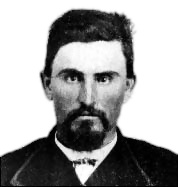
Charles Goodnight, also known as Charlie Goodnight, was an American cattle rancher in the American West, perhaps the best known rancher in Texas. He is sometimes known as the "father of the Texas Panhandle." Essayist and historian J. Frank Dobie said that Goodnight "approached greatness more nearly than any other cowman of history."
William Curry Holden, also known as Curry Holden, was an historian and archaeologist. In 1937, he became the first director of the Museum of Texas Tech University in Lubbock, Texas. During his tenure, the museum gained regional and state recognition for excellence. Holden also guided the plans for a new museum building, which was dedicated on November 11, 1970. The museum includes the main building, the Moody Planetarium, the Natural Science Research Laboratory, the research and educational elements of the Lubbock Lake Landmark, and the Val Verde County research site.

Nampeyo was a Hopi-Tewa potter who lived on the Hopi Reservation in Arizona. Her Tewa name was also spelled Num-pa-yu, meaning "snake that does not bite".

Mogollon culture is an archaeological culture of Native American peoples from Southern New Mexico and Arizona, Northern Sonora and Chihuahua, and Western Texas, a region known as Oasisamerica.

William Henry Holmes — known as W.H. Holmes — was an American explorer, anthropologist, archaeologist, artist, scientific illustrator, cartographer, mountain climber, geologist and museum curator and director.
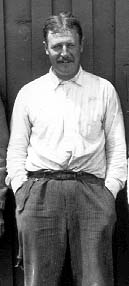
Alfred Vincent Kidder was an American archaeologist considered the foremost of the southwestern United States and Mesoamerica during the first half of the 20th century. He saw a disciplined system of archaeological techniques as a means to extend the principles of anthropology into the prehistoric past and so was the originator of the first comprehensive, systematic approach to North American archaeology.

The Spanish missions in the Sonoran Desert are a series of Jesuit Catholic religious outposts established by the Spanish Catholic Jesuits and other orders for religious conversions of the Pima and Tohono O'odham indigenous peoples residing in the Sonoran Desert. An added goal was giving Spain a colonial presence in their frontier territory of the Sonora y Sinaloa Province in the Viceroyalty of New Spain, and relocating by Indian Reductions settlements and encomiendas for agricultural, ranching, and mining labor.
Charles Corradino Di Peso was an American archaeologist. He is known for his research in Northern Mexico and the American Southwest.
Frederick Webb Hodge was an editor, anthropologist, archaeologist, and historian.
The Sobaipuri were one of many indigenous groups occupying Sonora and what is now Arizona at the time Europeans first entered the American Southwest. They were a Piman or O'odham group who occupied southern Arizona and northern Sonora in the 15th-19th centuries. They were a subgroup of the O'odham or Pima, surviving members of which include the residents of San Xavier del Bac which is now part of the Tohono O'odham Nation and the Akimel O'odham.
Dr. Joe Ben Wheat (1916–1997) was an archaeologist, curator, teacher, and author known for his expertise on blanket weavings and textiles of the Navajo and other Indians in Arizona, New Mexico, and Colorado. His research focused on Mogollon, Anasazi, Great Plains Paleo-Indian, and African Paleolithic archaeology.

Steven A. LeBlanc is an American archaeologist and former director of collections at the Peabody Museum of Archaeology and Ethnology at Harvard University's Peabody Museum.
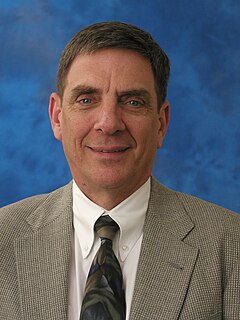
William E. Doolittle is an American geographer who is prominent among the fourth generation of the Berkeley School of Latin Americanist Geography. He is currently the Erich W. Zimmermann Regents Professor in Geography at the Department of Geography and the Environment at University of Texas at Austin. He specializes in landscapes and agricultural technology in the American Southwest and Mexico.
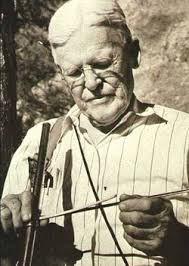
A. E. Douglass was an American astronomer. He discovered a correlation between tree rings and the sunspot cycle, and founded the discipline of dendrochronology, which is a method of dating wood by analyzing the growth ring pattern. He started his discoveries in this field in 1894 when he was working at the Lowell Observatory. During this time he was an assistant to Percival Lowell, but fell out with him when his experiments made him doubt the existence of artificial "canals" on Mars and visible cusps on Venus.
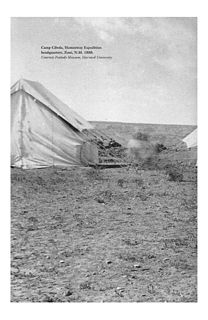
Hemenway Southwestern Archaeological Expedition occurred between 1886 and 1894 in the American southwest. Sponsored by Mary Tileston Hemenway, a wealthy widow and philanthropist, it was initially led by Frank Hamilton Cushing, who was replaced in 1889 by Jesse Walter Fewkes. It was considered to be a major scientific archaeological expedition, notable for the discovery of the prehistoric Hohokam culture. Until the 1930s, the expeditionary records were in storage. Emil Haury, a Harvard University student, published a monograph on Los Muertos in 1945, a site investigated in detail by the Hemenway Expedition and dated to the Hohokam culture.
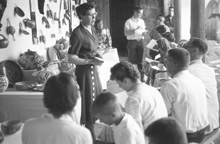
Katharine Bartlett (1907–2001) was an American physical anthropologist who worked from 1930 to 1952 as the first curator of the Museum of Northern Arizona, cataloging and organizing the museum's holdings, and then as the museum's librarian until 1981. She participated in a survey of the Navajo Nation's reservation in the Little Colorado River basin and established the cataloging system used by the Glen Canyon Archaeological Project. She was a Fellow of the American Association for the Advancement of Science, a Fellow of the American Anthropological Association and a Fellow of the Society of American Archaeology, as well as the first Fellow of the MNA. Honored in an exhibit of the Smithsonian Institution in 1986 and a recipient of the 1991 Sharlot Hall Award for her contributions to Arizona history, she was posthumously inducted into the Arizona Women's Hall of Fame in 2008.
Clara Lee Tanner was an anthropologist known for studies of the arts and crafts of American Indians of the Southwest.


















